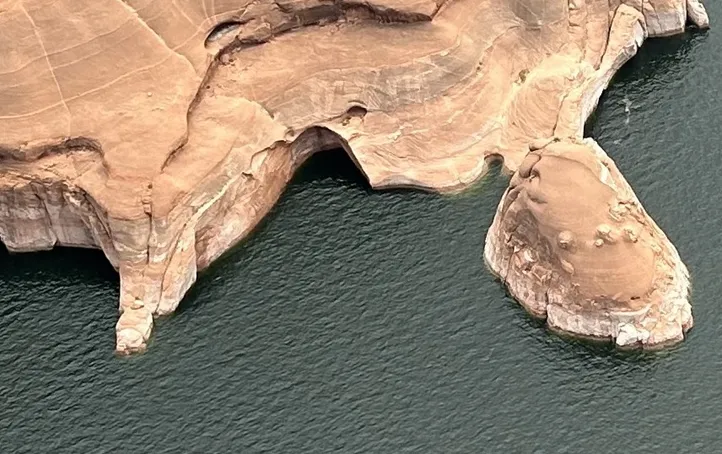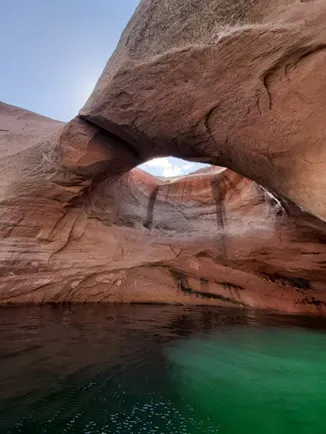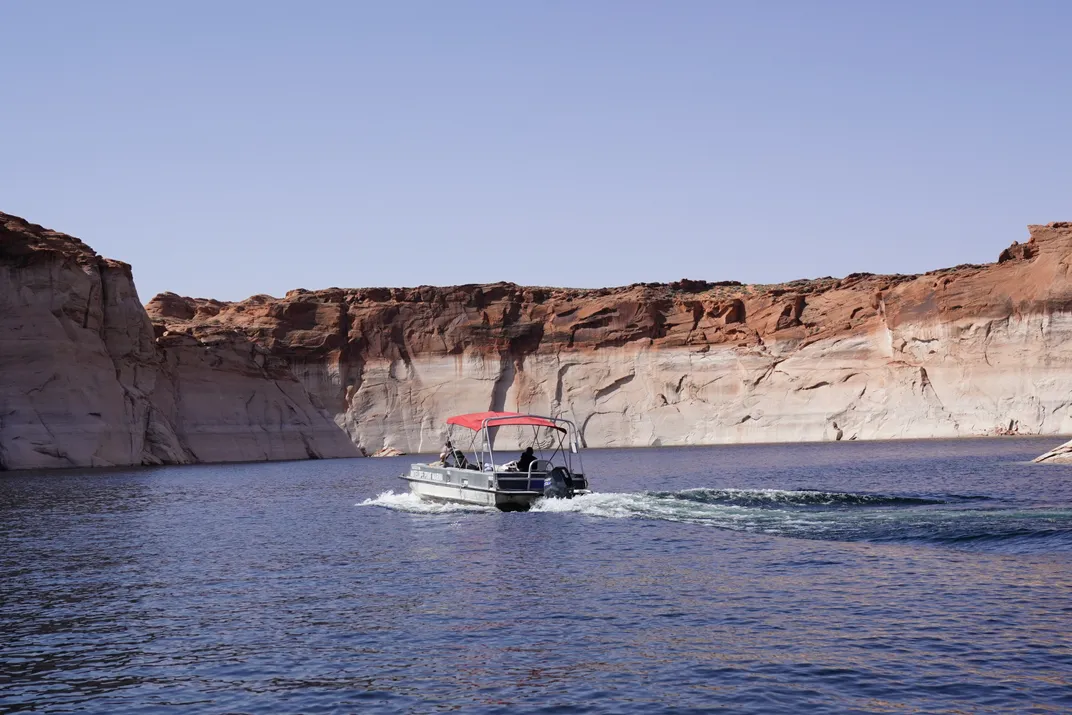Iconic ‘Double Arch’ Rock Formation Collapses in Utah
Changing water levels and erosion from waves may have contributed to the collapse in the popular Glen Canyon National Recreation Area

The “Double Arch” geologic feature, a popular tourist attraction in Utah’s Glen Canyon National Recreation Area, has collapsed, according to a statement from the National Park Service. No injuries were reported after the rock crumbled on Thursday.
The formation, also known as the “Toilet Bowl,” “Crescent Pool” and “Hole in the Roof,” had created a circular opening above Rock Creek Bay in Lake Powell, not far from Utah’s border with Arizona. Swimmers in the recreation area would often jump from the rock into the water, and boaters would stop underneath the skylight-like hole.
“It’s just such a beautiful, neat feature,” Monica Miles, a resident of Salt Lake County who traveled to the landform with her family, tells KSL-TV’s Lauren Steinbrecher. “It’s gone now, and I’m sad about it. … But we have so many wonderful memories there that will last forever.”

Glen Canyon National Recreation Area covers more than 1.25 million acres and also hosts the well-known Horseshoe Bend of the Colorado River. The park received more than 5.2 million visitors last year, setting a record and earning it a place among the most popular National Park Service sites.
Its “Double Arch” was formed from Navajo sandstone dating to 190 million years ago, during the late Triassic to early Jurassic periods, according to the National Park Service statement. The sandy formation had already been broken and eroded by weather, wind and rain over the years.
Park officials are unsure what caused the collapse. But changing water levels and erosion from waves are thought to be contributing factors.
“This event serves as a reminder of our responsibility and need to protect the mineral resources surrounding Lake Powell,” Michelle Kerns, Glen Canyon National Recreation Area superintendent, says in the statement. “These features have a life span that can be influenced or damaged by manmade interventions.”
Lake Powell, a massive reservoir filled by Arizona’s Glen Canyon Dam, started filling in 1963 and took 17 years to reach its capacity. When full, it stretches 186 miles long, reaches an elevation of 3,700 feet and has 1,960 miles of shoreline. The reservoir’s resources are used for power generation and water supplies in California, Arizona and Nevada. Its highest level historically was in July 1983.

But climate change and drought have caused Lake Powell’s water levels to decline. Water levels dropped dramatically in the early 2000s before partially rebounding in 2011 and 2012 as precipitation increased. As of August 11, Lake Powell’s elevation was 3,583 feet. It’s filled to only 39 percent of its capacity. The water level has been higher this year compared to the historic lows of 2022 and 2023, but it remains significantly below water levels in the 2010s.
“We will continue to maintain our resource protection efforts on Lake Powell for future generations to enjoy,” Kerns says in the statement. “Please enjoy our resources but leave no trace.”

